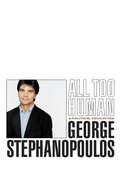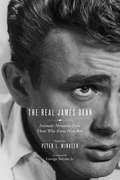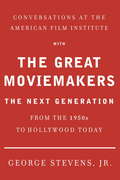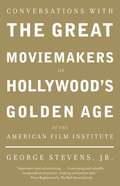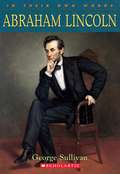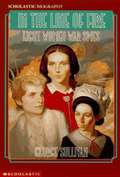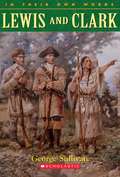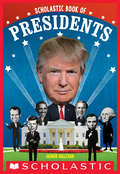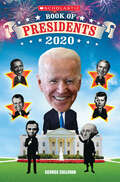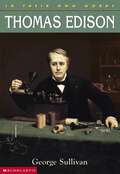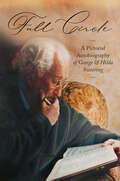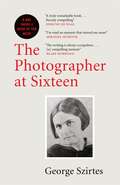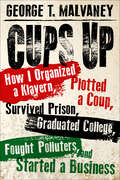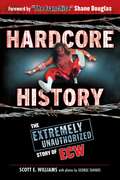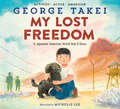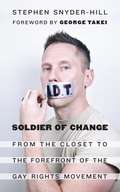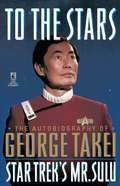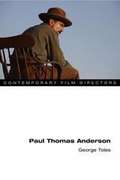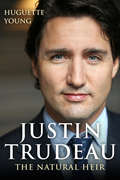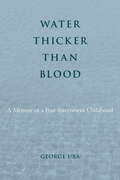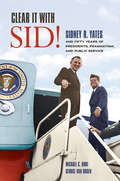- Table View
- List View
All Too Human: A Political Education
by George StephanopoulosAll Too Human is a new-generation political memoir, written from the refreshing perspective of one who got his hands on the levers of awesome power at an early age. At thirty, the author was at Bill Clinton's side during the presidential campaign of 1992, & for the next five years he was rarely more than a step away from the president & his other advisers at every important moment of the first term. What Liar's Poker did to Wall Street, this book will do to politics. It is an irreverent & intimate portrait of how the nation's weighty business is conducted by people whose egos & idiosyncrasies are no sturdier than anyone else's. Including sharp portraits of the Clintons, Al Gore, Dick Morris, Colin Powell, & scores of others, as well as candid & revelatory accounts of the famous debacles & triumphs of an administration that constantly went over the top, All Too Human is, like its author, a brilliant combination of pragmatic insight & idealism. It is destined to be the most important & enduring book to come out of the Clinton administration.
The Real James Dean: Intimate Memories from Those Who Knew Him Best
by Peter Winkler George StevensIn the decades following his death, many of those who knew James Dean best--actors, directors, friends, lovers (both men and women), photographers, and Hollywood columnists--shared stories of their first-person experiences with him in interviews and in the articles and autobiographies they wrote. Their recollections of Dean became lost in fragile back issues of movie magazines and newspapers and in out-of-print books that are extremely hard to find. Until now. The Real James Dean is the first book of its kind: a rich collection spanning six decades of writing in which many of the people whose lives were touched by Dean recall their indelible experiences with him in their own words. Here are the memorable personal accounts of Dean from his high school and college drama teachers; the girl he almost married; costars like Rock Hudson, Natalie Wood, Jim Backus, and Raymond Massey; directors Elia Kazan, Nicholas Ray, and George Stevens; entertainer Eartha Kitt; gossip queen Hedda Hopper; the passenger who accompanied Dean on his final, fatal road trip; and a host of his other friends and colleagues.
Conversations at the American Film Institute with the Great Moviemakers
by George Stevens Jr.A companion volume to George Stevens, Jr.'s, much admired book of American Film Institute seminars with the great pioneering moviemakers ("Invaluable"--Martin Scorsese).Those represented here--directors, producers, writers, actors, cameramen, composers, editors--are men and women working in pictures, beginning in 1950, when the studio system was collapsing and people could no longer depend on, or were bound by, the structure of studio life to make movies. Here also are those who began to work long after the studio days were over--Robert Altman, David Lynch, Steven Spielberg, among them--who talk about how they came to make movies on their own. Some--like Peter Bogdanovich, Nora Ephron, Sydney Pollack, François Truffaut--talk about how they were influenced by the iconic pictures of the great pioneer filmmakers. Others talk about how they set out to forge their own paths--John Sayles, Roger Corman, George Lucas, et al. In this series of conversations held at the American Film Institute, all aspects of their work are discussed. Here is Arthur Penn, who began in the early 1950s in New York with live TV, directing people like Kim Stanley and such live shows as Playhouse 90, and on Broadway, directing Two for the Seesaw and The Miracle Worker, before going on to Hollywood and directing Mickey One and Bonnie and Clyde, among other pictures, talking about working within the system. ("When we finished Bonnie and Clyde," says Penn, "the film was characterized rather elegantly by one of the leading Warner executives as a 'piece of shit' . . . It wasn't until the picture had an identity and a life of its own that the studio acknowledged it was a legitimate child of the Warner Bros. operation.") Here in conversation is Sidney Poitier, who grew up on an island without paved roads, stores, or telephones, and who was later taught English without a Caribbean accent by a Jewish waiter, talking about working as a janitor at the American Negro Theater in exchange for acting lessons and about Hollywood: It "never really had much of a conscience . . . This town never was infected by that kind of goodness." Here, too, is Meryl Streep, America's premier actress, who began her career in Julia in 1977, and thirty odd years later, at sixty, was staring in The Iron Lady, defying all the rules about "term limits" and a filmmaking climate tyrannized by the male adolescent demographic . . . Streep on making her first picture, and how Jane Fonda took her under her wing ("That little line on the floor," Fonda warned Streep, "don't look at it, that's where your toes are supposed to be. And that's how you'll be in the movie. If they're not there, you won't be in the movie"). Streep on the characters she chooses to play: "I like to defend characters that would otherwise be misconstrued or misunderstood." The Next Generation is a fascinating revelation of the art of making pictures.
Conversations with the Great Moviemakers of Hollywood's Golden Age: At the American Film Institute
by George Stevens Jr.The first book to bring together these interviews of master moviemakers from the American Film Institute's renowned seminars,Conversations with the Great Moviemakers offers an unmatched history of American cinema in the words of its greatest practitioners. Here are the incomparable directors Frank Capra, Elia Kazan, King Vidor, David Lean, Fritz Lang ("I learned only from bad films"), William Wyler, and George Stevens; renowned producers and cinematographers; celebrated screenwriters Ray Bradbury and Ernest Lehman; as well as the immortal Ingmar Bergman and Federico Fellini ("Making a movie is a mathematical operation. It's absolutely impossible to improvise"). Taken together, these conversations offer uniquely intimate access to the thinking, the wisdom, and the genius of cinema's most talented pioneers.
Abraham Lincoln (In Their Own Words)
by George SullivanPresents a biography, including excerpts from his speeches, letters, and other writings, of the man who was president during the Civil War.
Lewis and Clark (In Their Own Words)
by George SullivanDrawing on the explorers' journals and other primary sources, this book recounts the story of the Lewis and Clark expedition, exploring the uncharted western wilderness, placing it in its historical context. Includes historic prints, maps, photos, chronology, bibliography, and further reading lists.
Paul Revere (In Their Own Words)
by George SullivanThis book is a biography of the man made famous by a poem about the American Revolution, placing his life and work in its real historical context.
Scholastic Book of Presidents (Scholastic Inc Reference Non-fiction Ser.)
by George SullivanMeet America's newest president and get caught up on past commanders-in-chief in this revised edition of a classic, now updated with a brand new modern design!Hail to the Chief! Get ready to meet all of our nation's presidents, from George Washington to Barack Obama, and everyone in between, including a section on Donald Trump, our newest president elected in 2016. This easy-to-read book offers mini biographies and fun facts about each president's accomplishments in the Oval Office and beyond, accompanied by photographs and lists of key events.A must-have for any classroom or young history buff, the Scholastic Book of Presidents covers everything you need to know about America's greatest leaders from past to present.
Scholastic Book of Presidents 2020 (Scholastic Inc Reference Non-fiction Ser.)
by George SullivanRefresh your knowledge of the leaders who took our nation's highest office with this easy-to-read, fact-filled book of mini biographies on everyone from George Washington to Donald Trump, and catch up on all the biggest news from the 2020 election season. The Scholastic Book of Presidents will tell you:- Which president spoke the most languages?- Who was the last president to keep a full beard?- Which president has served in office the longest?Alongside photographs and lists of key events, this book covers everything you need to know about each president's major accomplishments in and out of the Oval Office. A must-read for history buffs, educators, and anyone with a budding interest in politics, past or present.
Thomas Edison (In Their Own Words Ser.)
by George SullivanIn Their Own Words: Thomas Edison tells the exciting story of Edison's life using his laboratory notes, business records, and personal recollections. "I find out what the world needs. Then I go ahead and try to invent it." With these words, Thomas Edison explains how he developed ideas and turned them into useful inventions. Although he is most famous for inventing the lightbulb, Edison is credited with hundreds of inventions. The young boy who did poorly in school became one of the most famous men in America. This exciting new biography of Thomas Edison will enlighten, as well as entertain, elementary school kids. <P> *This textbook has been transcribed in UEB, formatted according to Braille textbook formats, proofread and corrected.
Full Circle: A Pictorial Autobiography of George and Hilda Sweeting
by George SweetingBe inspired by the story of a life well lived.In this book you&’ll encounter—through words and images—the uplifting story of George Sweeting and his beloved wife, Hilda. You&’ll discern the providential hand of God as He brings the Sweetings&’ lives full circle. Both of George&’s parents were converted in Scotland by the ministry of D. L. Moody. Then, in God&’s perfect timing, He brought George into two leadership positions connected with this great evangelist—first, as pastor of the historic Moody Church in downtown Chicago, and second, as the sixth president of the school that Moody founded: the Moody Bible Institute.Along the way, God gave the Sweetings a deep heart for evangelism. Whether it was preaching in evangelistic crusades or sending missionaries to the foreign field, George has always been passionate about winning souls for Christ. &“Our supreme task is world evangelization in this generation!&” was the constant cry of his heart.From humble beginnings, to academic leadership, to friendship with a U.S. president, God used George and Hilda Sweeting to make an impact on the world. Lives lived for Christ from start to finish are hard to find these days—yet deeply encouraging when God brings them before our eyes. So enter into the story of the Sweetings and find your spirit refreshed by their legacy of faithfulness. And as you read, ask yourself, &“Lord, how do you want to bring my life full circle as well?&”
Full Circle: A Pictorial Autobiography of George and Hilda Sweeting
by George SweetingBe inspired by the story of a life well lived.In this book you&’ll encounter—through words and images—the uplifting story of George Sweeting and his beloved wife, Hilda. You&’ll discern the providential hand of God as He brings the Sweetings&’ lives full circle. Both of George&’s parents were converted in Scotland by the ministry of D. L. Moody. Then, in God&’s perfect timing, He brought George into two leadership positions connected with this great evangelist—first, as pastor of the historic Moody Church in downtown Chicago, and second, as the sixth president of the school that Moody founded: the Moody Bible Institute.Along the way, God gave the Sweetings a deep heart for evangelism. Whether it was preaching in evangelistic crusades or sending missionaries to the foreign field, George has always been passionate about winning souls for Christ. &“Our supreme task is world evangelization in this generation!&” was the constant cry of his heart.From humble beginnings, to academic leadership, to friendship with a U.S. president, God used George and Hilda Sweeting to make an impact on the world. Lives lived for Christ from start to finish are hard to find these days—yet deeply encouraging when God brings them before our eyes. So enter into the story of the Sweetings and find your spirit refreshed by their legacy of faithfulness. And as you read, ask yourself, &“Lord, how do you want to bring my life full circle as well?&”
The Photographer at Sixteen: A BBC RADIO 4 BOOK OF THE WEEK
by George SzirtesA poet's memoir of his mother that flows backwards through time, through a tumultuous period of European history - a tender and yet unsparing autobiographical journey.**RADIO 4's BOOK OF THE WEEK FROM 15 March 2021**"A truly remarkable book . . . fiercely compelling" EDMUND DE WAAL*WINNER OF THE JAMES TAIT BLACK MEMORIAL PRIZE* *SHORTLISTED FOR THE JEWISH WINGATE PRIZE*"I've read no memoir that moved me more" MIRANDA SEYMOUR"The writing is always scrupulous . . . [a] compelling memoir" BLAKE MORRISON"Beautifully written and utterly compelling" Sunday Times"An original, probingly thoughtful memoir" EVA HOFFMANNIn July 1975, George Szirtes' mother, Magda, died in an ambulance, on her way to hospital after attempting to take her own life. She was fifty-one years old. This memoir is an attempt to make sense of what came before, to re-construct who Magda Szirtes really was. The Photographer at Sixteen moves from her death, spooling backwards through her years as a mother, through sickness and exile in England, the family's flight from Hungary in 1956, her time in two concentration camps, her girlhood as an ambitious photographer and her vanished family in Transylvania.The woman who emerges, fleetingly, fragmentarily - with her absolutism, her contradictions, her beauty - is utterly captivating. What were the terrors and obsessions that drove her? The Photographer at Sixteen reveals a life that is at Magda Szirtes from the depths of the end to the comparable safety of the photographer's studio where she first appears as a small child. It is a book born of curiosity, guilt and love.
The Photographer at Sixteen: A BBC RADIO 4 BOOK OF THE WEEK
by George SzirtesA poet's memoir of his mother that flows backwards through time, through a tumultuous period of European history - a tender and yet unsparing autobiographical journey.**RADIO 4's BOOK OF THE WEEK FROM 15 March 2021**"A truly remarkable book . . . fiercely compelling" EDMUND DE WAAL*WINNER OF THE JAMES TAIT BLACK MEMORIAL PRIZE* *SHORTLISTED FOR THE JEWISH WINGATE PRIZE*"I've read no memoir that moved me more" MIRANDA SEYMOUR"The writing is always scrupulous . . . [a] compelling memoir" BLAKE MORRISON"Beautifully written and utterly compelling" Sunday Times"An original, probingly thoughtful memoir" EVA HOFFMANNIn July 1975, George Szirtes' mother, Magda, died in an ambulance, on her way to hospital after attempting to take her own life. She was fifty-one years old. This memoir is an attempt to make sense of what came before, to re-construct who Magda Szirtes really was. The Photographer at Sixteen moves from her death, spooling backwards through her years as a mother, through sickness and exile in England, the family's flight from Hungary in 1956, her time in two concentration camps, her girlhood as an ambitious photographer and her vanished family in Transylvania.The woman who emerges, fleetingly, fragmentarily - with her absolutism, her contradictions, her beauty - is utterly captivating. What were the terrors and obsessions that drove her? The Photographer at Sixteen reveals a life that is at Magda Szirtes from the depths of the end to the comparable safety of the photographer's studio where she first appears as a small child. It is a book born of curiosity, guilt and love.
Cups Up: How I Organized a Klavern, Plotted a Coup, Survived Prison, Graduated College, Fought Polluters, and Started a Business (Willie Morris Books in Memoir and Biography)
by George T. MalvaneyGeorge T. Malvaney's life epitomizes the old maxim that "You cannot make this stuff up." Combine a young Klansman from Mississippi, an armed coup attempt in the Caribbean, a stay in prison, and a life-changing epiphany, and you have but half of this swashbuckling tale. Throw in the worst man-made ecological disaster in the history of the United States, and you have unleashed Malvaney's full life story. The Klansman, the soldier of fortune, the wild-eyed prisoner transforms into a renowned leader of the Mississippi Gulf Coast cleanup effort in the wake of the BP Deepwater Horizon oil spill.In his too-crazy-not-to-be-true memoir, Malvaney chronicles what easily should be several lifetimes of adventure--and misadventure. Growing up in a close-knit family in Jackson, Mississippi, the young Malvaney preferred woods and swamps to the drudgery of high school. He dropped out, enlisted in the Navy, and shortly afterwards joined the Ku Klux Klan. While onboard, he organized a branch of the Klan, corrupting and endangering his crewmen. After his discharge, he answered a mercenary call to take part in an invasion of Dominica, a Caribbean fiasco known as the "Bayou of Pigs." That madness landed him in a federal penitentiary. And there, somehow, he vowed to turn his life around.Cups Up, a title drawn from the wake-up call shouted at prisoners, is a story of perseverance, cleansing, and redemption. It chronicles the roller coaster life of a high school dropout, ex-Klansman, ex-mercenary, ex-felon, and ex-con, who went on to become a college graduate, a hardnosed environmental regulator, and a widely respected top executive in a company with more than a thousand employees.
The Big Bands
by George T. SimonGeorge T. Simon introduces you to the big band leaders during the period spanning 1935 to 1946.
Hardcore History: The Extremely Unauthorized Story of ECW
by Scott E. Williams George Tahinos Shane DouglasExtreme Championship Wrestling (ECW) was one extreme contradiction on top of another. An incredibly influential-but never profitable-company in the world of professional wrestling in the 1990s, it portrayed itself as the ultimate in anti-authority rebellion, but its leadership was working covertly with the World Wrestling Federation and the World Championship Wrestling. Most of all, it blurred the line between reality and the fantasy world of professional wrestling.Hardcore History: The Extremely Unauthorized Story of ECW offers a frank, balanced look at the evolution of ECW starting before its early days as a Philadelphia-area independent group and extending past its death in 2001. Featuring dozens of interviews with fans, officials, business partners, and the wrestlers themselves, this is a very balanced account of this bizarre company-and it’s sure to be extremely controversial for fans and critics of ECW, and wrestling, alike.Skyhorse Publishing, as well as our Sports Publishing imprint, is proud to publish a broad range of books for readers interested in sports-books about baseball, pro football, college football, pro and college basketball, hockey, or soccer, we have a book about your sport or your team.In addition to books on popular team sports, we also publish books for a wide variety of athletes and sports enthusiasts, including books on running, cycling, horseback riding, swimming, tennis, martial arts, golf, camping, hiking, aviation, boating, and so much more. While not every title we publish becomes a New York Times bestseller or a national bestseller, we are committed to publishing books on subjects that are sometimes overlooked by other publishers and to authors whose work might not otherwise find a home.
My Lost Freedom: A Japanese American World War II Story
by George Takei Michelle LeeA moving, beautifully illustrated true story for children ages 6 to 9 about growing up in Japanese American incarceration camps during World War II—from the iconic Star Trek actor, activist, and author of the New York Times bestselling graphic memoir They Called Us Enemy. <P><P> February 19, 1942. George Takei is four years old when his world changes forever. Two months after the bombing of Pearl Harbor, President Franklin D. Roosevelt declares anyone of Japanese descent an enemy of the United States. <P><P> George and his family were American in every way. They had done nothing wrong. But because of their Japanese ancestry, they were removed from their home in California and forced into camps with thousands of other families who looked like theirs. <P><P> Over the next three years, George had three different “homes”: the Santa Anita racetrack, swampy Camp Rohwer, and infamous Tule Lake. But even though they were now living behind barbed wire fences and surrounded by armed soldiers, his mother and father did everything they could to keep the family safe. <P><P> In My Lost Freedom, George Takei looks back at his own memories to help children today understand what it feels like to be treated as an enemy by your own country. Featuring powerful, meticulously researched watercolor paintings, this is a story of a family’s courage, a young boy’s resilience, and the importance of staying true to yourself in the face of injustice. <P><P><i>Advisory: Bookshare has learned that this book offers only partial accessibility. We have kept it in the collection because it is useful for some of our members. Benetech is actively working on projects to improve accessibility issues such as these.</i> <p> <b>New York Times Bestseller</b>
Soldier of Change: From the Closet to the Forefront of the Gay Rights Movement
by George Takei Stephen Snyder-HillWhen "Don't Ask, Don't Tell," the official U. S. policy on gays serving in the military, was repealed in September 2011, soldier Stephen Snyder-Hill (then Captain Hill) was serving in Iraq. Having endured years of this policy, which passively encouraged a culture of fear and secrecy for gay soldiers, Snyder-Hill submitted a video to a Republican primary debate held two days after the repeal. In the video he asked for the Republicans' thoughts regarding the repeal and their plans, if any, to extend spousal benefits to legally married gay and lesbian soldiers. His video was booed by the audience on national television. Soldier of Change captures not only the media frenzy that followed that moment, placing Snyder-Hill at the forefront of this modern civil rights movement, but also his twenty-year journey as a gay man in the army: from self-loathing to self-acceptance to the most important battle of his life--protecting the disenfranchised. Since that time, Snyder-Hill has traveled the country with his husband, giving interviews on major news networks and speaking at universities, community centers, and pride parades, a champion of LGBT equality.
To The Stars: The Autobiography of George Takei (Star Trek)
by George TakeiBest known as Mr. Sulu, helmsman of the Starship Enterprise™ and captain of the Starship Excelsior, George Takei is beloved by millions as part of the command team that has taken audiences to new vistas of adventure in Star Trek®—the unprecedented television and feature film phenomenon.From the program’s birth in the changing world of the 1960s and death at the hands of the network to its rebirth in the hearts and minds of loyal fans, the Star Trek story has blazed its own path into our recent cultural history, leading to a series of blockbuster feature films and three new versions of Star Trek for television. The Star Trek story is one of boundless hope and crushing disappointment, wrenching rivalries and incredible achievements. It is also the story of how, after nearly thirty years, the cast of characters from a unique but poorly rated television show have come to be known to millions of Americans and people around the world as family. For George Takei, the Star Trek adventure is intertwined with his personal odyssey through adversity in which four-year-old George and his family were forced by the United States government into internment camps during World War II. Star Trek means much more to George Takei than an extraordinary career that has spanned thirty years. For an American whose ideals faced such a severe test, Star Trek represents a shining embodiment of the American Dream—the promise of an optimistic future in which people from all over the world contribute to a common destiny.
Paul Thomas Anderson (Contemporary Film Directors)
by George TolesSince his explosive debut with the indie sensation Hard Eight , Paul Thomas Anderson has established himself as one of contemporary cinema's most exciting artists. His 2002 feature Punch-Drunk Love radically reimagined the romantic comedy. Critics hailed There Will Be Blood as a key film of the new millennium. In The Master , Anderson jarred audiences with dreamy amorphousness and a departure from conventional story mechanics. Acclaimed film scholar and screenwriter George Toles approaches these three films in particular, and Anderson's oeuvre in general, with a focus on the role of emergence and the production of the unaccountable. Anderson, Toles shows, is an artist obsessed with history, workplaces, and environments but also intrigued by spaces as projections of the people who dwell within. Toles follows Anderson from the open narratives of Boogie Nights and Magnolia through the pivot that led to his more recent films, Janus-faced masterpieces that orbit around isolated central characters--and advance Anderson's journey into allegory and myth. Blending penetrative analysis with a deep knowledge of filmic storytelling, Paul Thomas Anderson tours an important filmmaker's ever-deepening landscape of disconnection.
Justin Trudeau: The Natural Heir
by Huguette Young George TombsA National Bestseller • The Hill Times: Best Books of 2016 This unauthorized biography provides a rare look at the real Justin Trudeau, retracing his steps from his early days to the height of power. Having grown up in the shadow of his famous father, a political giant who dominated Canadian politics for almost sixteen years, Justin Trudeau took many detours before discovering that he was a natural politician, with qualities, such as a charismatic ease with the public, that his father never possessed. Yet to most Canadians, Trudeau remains a blank slate. Inexperienced and underestimated, he was able, in his early forties, to catapult the Liberal Party of Canada from third to first place in one giant sweep. It was a historic feat that left a nation amazed and wondering what to expect next. In this unauthorized biography, journalist Huguette Young, who has conducted numerous interviews with Trudeau’s entourage, gives a look inside his inner circle and shows the path his leadership might take. Meant for supporters and skeptics alike, Young’s is a revealing account of one of Canada’s most compelling and enigmatic figures.
Water Thicker Than Blood: A Memoir of a Post-Internment Childhood (Asian American History & Cultu)
by George Uba“I thought my life began in Chicago. I was mistaken. That is where my body first made its appearance, but the contours of my life…had their start much sooner.” In Water Thicker Than Blood, poet and professor George Uba traces his life as a Japanese American born in the late 1940s, a period of insidious anti-Japanese racism. His beautiful, impressionist memoir chronicles how he, like many Sansei (and Nisei) across the United States, grappled with dislocation and trauma while seeking acceptance and belonging. Uba’s personal account of his efforts to achieve normality and assuage guilt unfolds as racial demographics in America are shifting. He struggled with inherently violent midcentury educational and childrearing practices and a family health crisis, along with bullying. Uba describes boy scouts and yogore (community rebels and castoffs) with vivid detail, using these vignettes to show how margins were blurred and how both sets of youth experienced injury through the same ideological pressures. Water Thicker Than Blood is not a conventional story about recovery or family reconciliation. But itoffers an intimate look at the lasting—in some ways irreversible—damage caused by post-internment ideologies of “being accepted” and “fitting in inconspicuously.” It speaks volumes for the greater Sansei post-internment experience.
Clear It with Sid!: Sidney R. Yates and Fifty Years of Presidents, Pragmatism, and Public Service
by Michael Dorf George Van DusenThe son of a Lithuanian blacksmith, Sidney R. Yates rose to the pinnacle of Washington power and influence. As chair of a House Appropriations Subcommittee, Yates was a preeminent national figure involved in issues that ranged from the environment and Native American rights to Israel and support for the arts. Speaker Tip O'Neill relied on the savvy Chicagoan in the trenches and advised anyone with controversial legislation to first "clear it with Sid!" Michael C. Dorf and George Van Dusen draw on scores of interviews and unprecedented access to private papers to illuminate the life of an Illinois political icon. Wise, energetic, charismatic, petty, stubborn--Sid Yates presented a complicated character to constituents and colleagues alike. Yet his get-it-done approach to legislation allowed him to bridge partisan divides in the often-polarized House of Representatives. Following Yates from the campaign trail to the negotiating table to the House floor, Dorf and Van Dusen offer a rich portrait of a dealmaker extraordinaire and tireless patriot on a fifty-year journey through postwar American politics.
